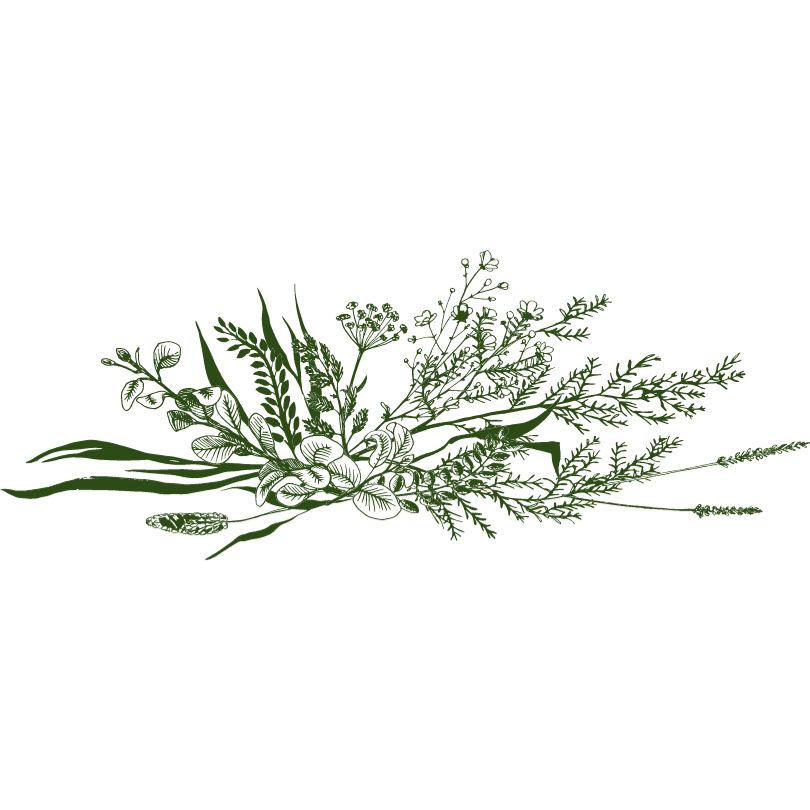A clay mask. A super easy way to fabulous skin.
There’s 3 different cosmetic clays that are most known for making a clay mask. All are great and are a wonderful way to deep clean and detox your skin.
They all have subtle differences. All three of these clays have been used for hundreds and, in some cases, thousands of years. And they’re still loved for the benefits they provide.
We’ll review all three clay types and go over their specific benefits. This will give you the information you need to make your own clay mask any time you want one.
3 different clays to choose from for making your clay mask
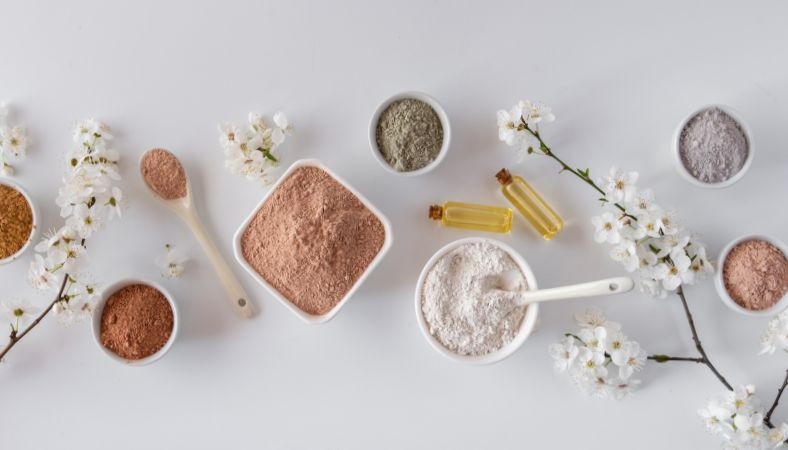
Bentonite.
The name Bentonite comes from Fort Benton, MT where it can be found in large amounts in the US. It’s sometimes referred to as Montmorillonite.
Bentonite is a highly absorbent clay which comes from volcanic ash.
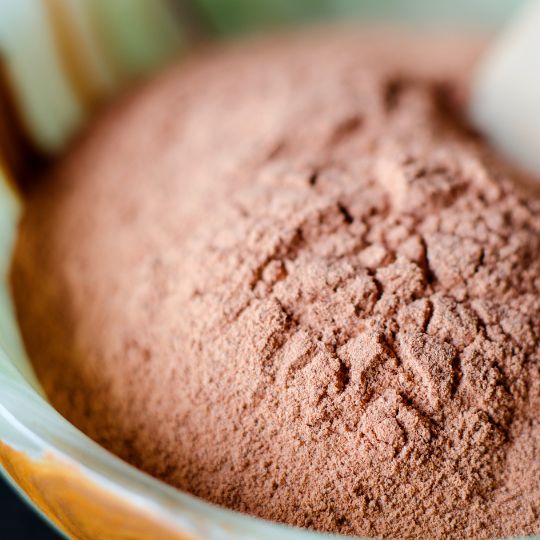
It’s been used for thousands of years to:
- Clean and protect the skin
- Heal skin infections or acne
- Treat stomach gas
- Ease diarrhea
Like all of these clays, Bentonite has been used to make medicine and make up.
It attracts particles like dirt on your skin and can help remove excess sebum (oil) from your skin’s surface. This can make this good clay for oily skin.
This absorbency & it’s antibacterial & anti-inflammatory properties makes it great for calming inflamed breakouts.
Bentonite has been used to treat the rash from poison ivy. It’s recommended that you wash thoroughly with soap & water as soon as you know you’ve gotten the oils on your skin from the ivy.
Mix a mask of bentonite & water and put on the affected area. Let it set to dry. The drawing power of the clay and it’s ability to remove the oils from your skin, will help, not only, to remove the offending oils, but to help heal the skin too.
You should keep it in a glass or plastic jar with a glass or plastic lid as opposed to anything metal. As the clay may absorb some of the metal.
Bentonite has been used for years and into present day for treating diaper rash. Just mix it with coconut oil and apply to a baby’s bottom. Testing has shown this to be more effective than calendula (which is pretty amazing in and of itself).
Testing has actually been done and shown it can act efficiently in the healing of skin lesions and ulcers.
Green Clay
Green clay is referred to as French Green Clay because it’s often mined from deposits in France.
At one time, Green clay was all mined in France. As it became more popular, similar deposits were found in the United States and other countries.
It’s green color comes from iron oxide and decomposed plant matter, like seaweed.
French green clay is beneficial in removing impurities and tightening pores. It tones & balances the skin, reducing the appearance of fine lines and it stimulates cell regeneration.
This clay exfoliates dead skin cells, deep cleans and unclogs pores of the oils and impurities that can lead to acne.
It can be used as a full-body treatment to soften dry, rough skin.
Green clay can be drying, so only use it roughly once a week.
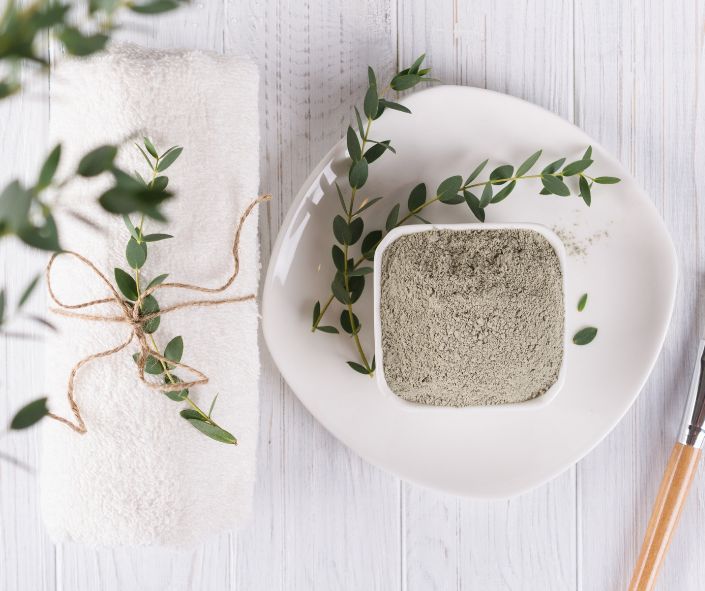
Kaolin clay
Kaolin was originally harvested from a hill in China called Kao-ling and used to make fine china.. Now it’s found all over the world.
One of the largest sources in the US comes from the southeast part of the country.
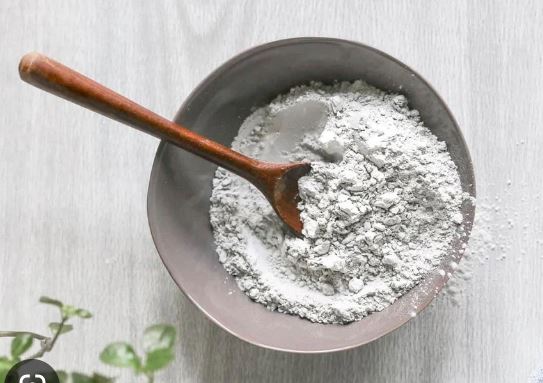
It’s great for cleansing. It absorbs extra oil from your skin’s surface, keeping pores unclogged. And it only controls the excess sebum production on the surface of the skin, not effecting the natural oil levels from deep in the dermis.
As a natural cleanser, it removes dirt & impurities from pores, cleaning without drying.
As an exfoliator, it removes the tiniest of particles. It soothes and calms irritated skin caused by insect bite or skin rash. And has mild healing properties to soothe irritation & redness.
Kaolin clay evens out skin tone when used on a regular basis and is good for all skin types. It’s especially good for mature and sensitive skin and can be used daily.
It also has mild anti-inflammatory & antibacterial benefits.
Other clay mask ingredients
Making a clay mask can be as easy as mixing the clay with water to create a smooth paste. Spread it over your face, neck & chest and let it sit up to 15 min to almost dry, then rinsing with warm water.
But these clays can be mixed with oils, honey, or Greek yogurt too.
Here’s some information on each to help you decide how to mix your mask.
Yogurt

Yogurt contains lactic acid, an alpha hydroxy acid (otherwise known as an “AHA”.)
The calcium content in yogurt helps to effectively nourish your skin. And its moisturizing effect on the skin prevents dryness.
Yogurt contains B vitamins that act as a natural lotion.
Honey

Honey has antibacterial & antimicrobial properties and antiseptic abilities that can benefit oily and acne-prone skin.
And it’s a natural humectant, so it helps keep the skin moist but not oily.
Older studies have shown that honey can help with improving the skin’s appearance.
Make sure it’s natural honey and not a “honey product”.
Oils
Sweet almond oil
Sweet almond oil is non-comedogenic, meaning it won’t clog your pores.
It’s rich in vitamin A, B and E, which are all necessary for skin health. And the fatty acids found in sweet almond oil can help sustain the moisture levels of your skin.
Avocado
In addition to vitamin E, avocado oil contains many nutrients that can nourish and moisturize the skin. The outermost layer of skin, known as the epidermis, easily absorbs these nutrients, which also help to form new skin.
It naturally triggers the production of collagen which is responsible for tightening your skin and preventing wrinkles and other signs of aging.
Jojoba oil
Jojoba oil is actually a wax and not an oil. And it’s a humectant which means it works to attract water to the top layer of the skin. It contains vitamin E, an antioxidant which can help fight the signs of aging. And has anti-inflammatory & other healing properties that can help relieve dryness, flaking & itching when applied topically.
Its makeup is so similar to the oil (sebum) your body naturally produces that your skin can’t tell the difference.
Olive Oil
Olive oil is an excellent skin moisturizer, especially when applied to wet skin when the pores are open. It can act as a second skin barrier for dry, cracked skin in the winter. Another great benefit of olive oil is its antioxidant and anti-inflammatory properties. And it’s rich in vitamin E.
Making your clay mask
If you’ve read anything on this website, you know I’m all about simple. The fewer ingredients the better.
When you make these masks you can mix and match to your heart’s content.
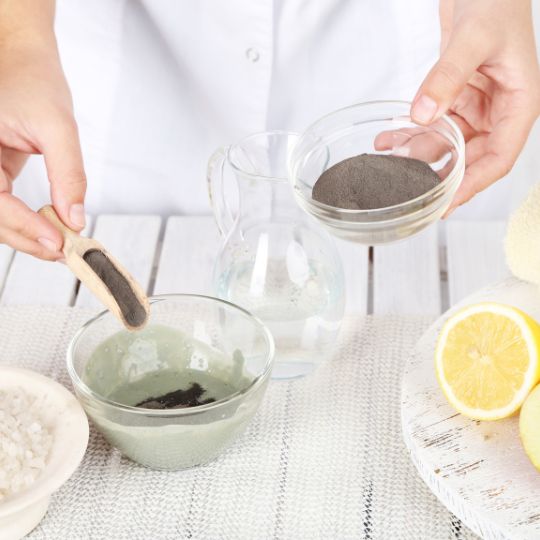
Your recipe should be a creamy mix that can be smoothed over your face, neck & upper chest.
I suggest starting with just 2 ingredients.
Decide which oil you like best. Then try it with yogurt, and then with honey.
Once you’ve tried each of these, note which one worked best for you and your skin type. Then you can begin to mix a little more. Maybe add a little bit of honey to your oil & clay mixture or to your yogurt & clay mixture. You might want to add in some ground oats.
Everyone is different. And while I can say what each of these ingredients can do and what skin type they may work best for, the combination of these will be different for each person because each person is unique in their skin type.
These recipes are a starting place. Play with them, change them and make them your own personal skin care recipe.
Recipes
As with all the ingredients including the clays, always use the best you can afford. Remember what goes on your body is just as important as what goes in it. If you can get organic, do. If not, at least try for a non-GMO.
Always read labels to make sure nothing’s been mixed with the clays or any of your other ingredients.
Clay & Oil Mask
Use 2 Tablespoons of your oil & clay. If it seems too dry add a touch more oil, too runny a touch more clay.
You’re looking for a smooth creamy mixture that’s thick enough to hold to your skin.
If it doesn’t make enough, add a teaspoon of each until you have as much as you need.
This mask probably won’t get to the almost dry stage.
Let set for anywhere from 5-15 min.
Clay & Yogurt Mask
Use ¼ cup of plain Greek yogurt. No sugars or flavoring of any kind.
Add 1-2 Tablespoons of clay.
Mix to a thick creamy mixture
This mask will take longer to get to the almost dry stage.
Let set for anywhere from 5 -15 min.
Clay & Honey Mask
Mix about 2 Tablespoons of honey to 1 Tablespoon of clay.
This will take some time to mix as the honey is thick and hard to mix with the clay. Using your fingers might be the easiest way to mix it. It will also take a bit to spread over your skin.
Put some on your skin and let it set for a minute or two. The heat radiating from your skin will help warm the honey making it a little easier to spread.
Again let this one set anywhere from 5 to 15 min.
For all of these masks, you can mix or match. And there’s no end to the different ingredients you can add to these masks.
You will eventually find the one you are in love with.
Removing your mask
Anytime you’re removing a clay mask, be very gentle.
I’ve found the best way is to do this in the shower. You can warm the mask and your skin and gently remove the mask with a very warm wash cloth without making a mess.

If you are at a sink, be sure to use a very warm wash cloth and soak your face for a few minutes and then gently wipe the mask away. Don’t try to take it off all at once. Rinse and rewet the cloth several times.
You can also lean over the sink and use warm water on your face to remove as much as possible, then use a warm cloth to remove wherever remains. Again, do this in small amounts, not trying to get it all off at once. You don’t want to be pulling on your skin, just gently rubbing over it to remove small amounts at a time.
That’s it. You’ve created a wonderfully nourishing mask made specifically to your skin.
I hope you found a clay you love.
My clay journey started with the Bentonite clay. Using it about once a week (when I remembered) or once or twice over several months, I discovered I truly loved this all natural exfoliator. It turned out to be perfect for me and for leaving the store bought products behind.
Do you use clay as a cleanser or as a mask? If so, which do you use? Do you mix it with anything or do you use it as a stand alone clay?
I’d really love to know if and how you use facial clays. Send me an email and give me the scoop.
